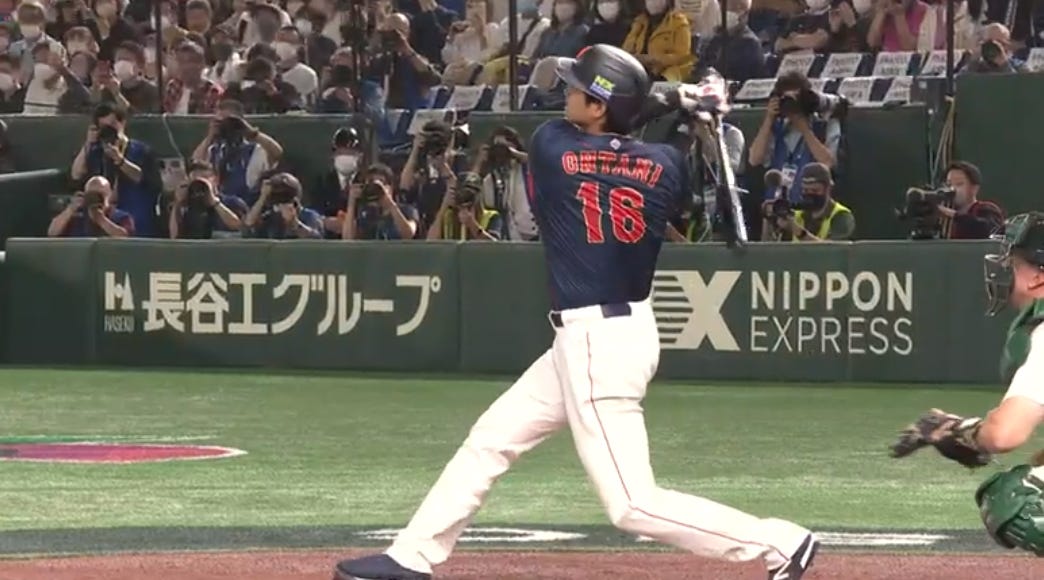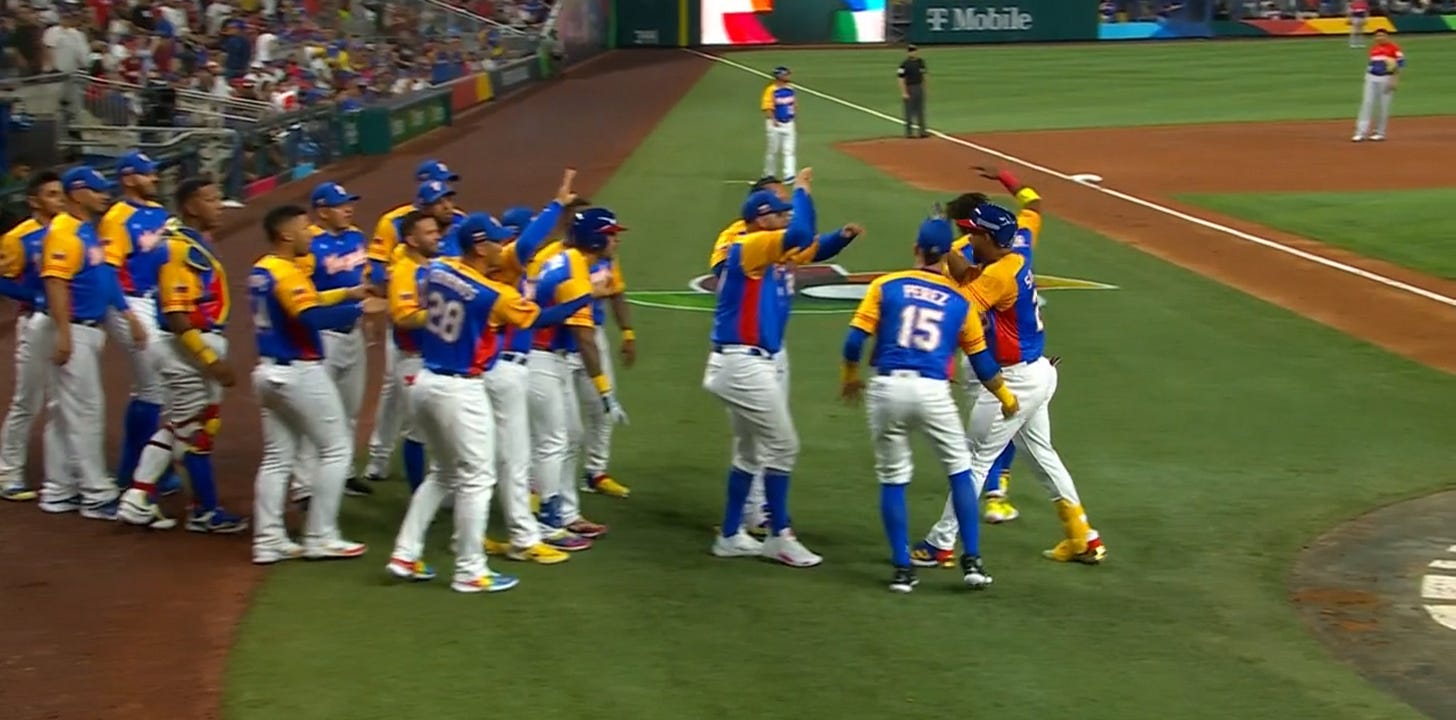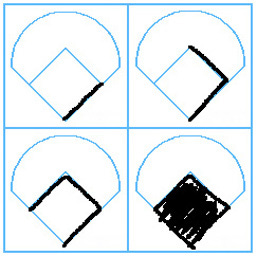The Cycle, Spoke #2: Never Get Involved in a Land War in Asia
Team USA is in a precarious position heading into the final days of pool play as upsets abound in the first week of a thrilling WBC.
World Baseball Heaven
Greetings, Cyclists! I hope you’re all enjoying the World Baseball Classic. I’ve been watching as many games as possible and loving every minute of it. So much so that, at the end of last week, in order to watch the day games in Asia after midnight and night games in Asia in the early morning, I found myself slipping back into the sort of polyphasic sleep schedule I used to keep when my daughter was an infant. Then the U.S.-based games kicked into gear over the weekend, and my cup has runneth over. Thus far, the tournament has been everything I had hoped for and more, and I wanted to drop back into your inbox today to set up the second and final week of action.
Because the two semifinalists from the Asian pools (played in Taichung and Tokyo) have to travel to Miami for the finals (and adjust to the resulting 13-hour time difference), the first quarterfinal in Tokyo will be played before the final four games in the two U.S.-based pools. There is thus not a clear delineation between the initial round of pool play and the start of the elite eight bracket, for the tournament as a whole. However, as I’ll explain below, Monday and Tuesday of this week represent a relatively quiet moment in the action from which we can anticipate Wednesday’s crucial slate of games and the conclusion of the tournament over the six days that follow. So, let’s get to it.
Pool A and B Results
For those who haven’t been watching (but perhaps are hoping to jump in with the start of the finalist bracket on Wednesday), here’s how things shook out in the Pool A in Taichung and Pool B in Tokyo:
Pool B (Japan etc.):
As expected, Japan was the dominant team in Pool B, going 4–0 to clinch homefield in Thursday’s quarterfinal. However, in the very first of that pool’s 10 games, Australia upset Korea, 8–7, via late-inning three-run homers by second baseman Robbie Glendinning and catcher Robbie Perkins. With both teams producing identical results against the other three countries in the pool (losing to Japan and beating China and the Czech Republic), that upset was enough for Australia to advance out of pool play for the first time in their five WBC appearances, and for Korea to be eliminated in pool play for the third straight time. Meanwhile, the ragtag Czech Republic team beat the hapless Chinese team, 8–5, in their first WBC game to secure an automatic return to the next Classic in 2026 and force 0–4 China, a participant in all five Classics thus far, to participate in the qualifying tournament in the fall of 2025.
Pool A (the Pool of Chaos):
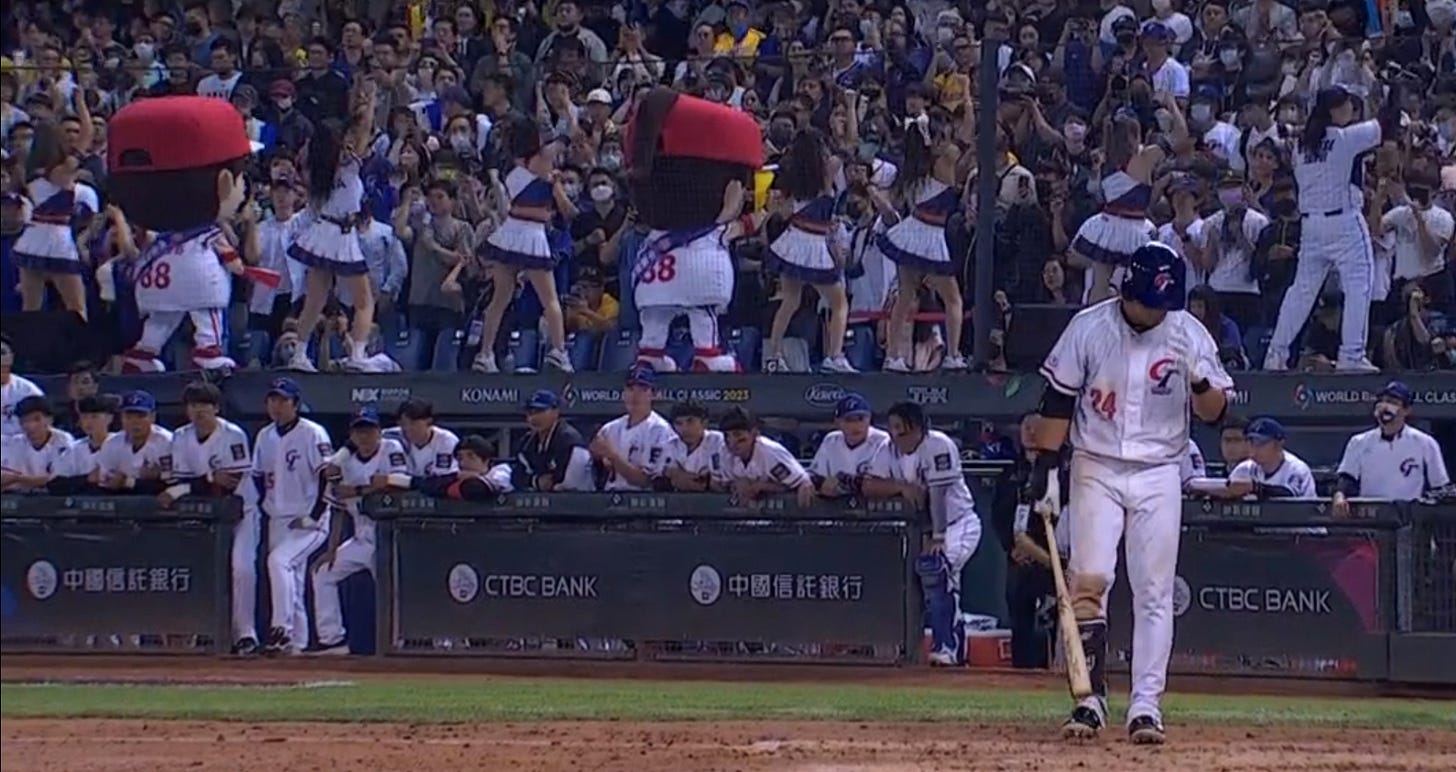
Things went very differently in Pool A, with all five teams finishing 2–2, and each team losing to a team that another one beat, forcing a runs-allowed tiebreaker to come into play to determine the standings from top to bottom. Thus, 2–2 Cuba emerged as the top seed despite losing to 2–2 Netherlands, which finished third and was eliminated, while 2–2 Chinese Taipei, the host country, finished last and will have to play in the qualifying tournament in 2025 despite beating 2–2 Italy, which will also advance to the quarterfinals in place of the Netherlands (which, to be fair, Italy beat head-to-head by a score of 7–1 in the final game of the pool, a game which would have put Netherlands in the quarterfinals and relegated Italy had the Dutch won). Meanwhile, this year’s qualifying team, Panama (also 2–2, of course) edged Chinese Taipei via that runs-allowed quotient to earn automatic inclusion in its fourth WBC in 2026.
That result again: Cuba and Italy advance as the one and two seeds from Pool A, respectively, with Chinese Taipei relegated to the qualification tournament. Japan and Australia advance as the one and two seeds from Pool B, respectively, with China relegated.
Pool C and D (in progress)
We have already seen some surprising results in Pools C and D that have set the stage for a compelling finish to those pools on Wednesday. However, the matchups in those pools on Monday and Tuesday (especially Tuesday) are more lopsided and less likely to produce further upsets, allowing me to set the stage and stakes for Wednesday here while those games continue to be played.
Pool D (the Big Three):
We knew Pool D was going to be a tight one, because it contained three teams—the Dominican Republic, Venezuela, and Puerto Rico—that are arguably better than every team in Pools A and B other than Japan, yet only two of the three can advance. Venezuela put itself in command of that pool right away by beating the Dominican, 5–1, on Saturday behind strong pitching performances from Martín Pérez and, especially, the Astros’ Luis Garcia, the latter of whom struck out seven in three hitless innings of relief, clearly undisturbed by the need to eliminate his rock-the-baby routine from his windup this spring. Things could have gotten chaotic if Puerto Rico then beat Venezuela, but Venezuela jumped all over José Berríos on Sunday, Pablo López was dominant for 4 2/3 innings (a long outing given the round’s 65-pitch limit), and Venezuela held on for a 9–6 win, all but clinching the top seed in the division.
Assuming all three teams beat the pool’s undercard of Israel and Nicaragua (as of this writing, Puerto Rico and the Dominican Republic had already beat Nicaragua), Venezuela will advance with a 4–0 record, and the second seed will come down to the final game of the pool between Puerto Rico and the Dominican Republic on Wednesday, effectively making that an elimination game.
Incidentally, Israel beat Nicaragua in their matchup on Sunday, so, barring an almost unfathomable upset of Venezuela by Nicaragua on Tuesday, Israel will return to the 2026 tournament, while Nicaragua will return to the qualifying tournament in 2025.
Pool C (USA & Co.):
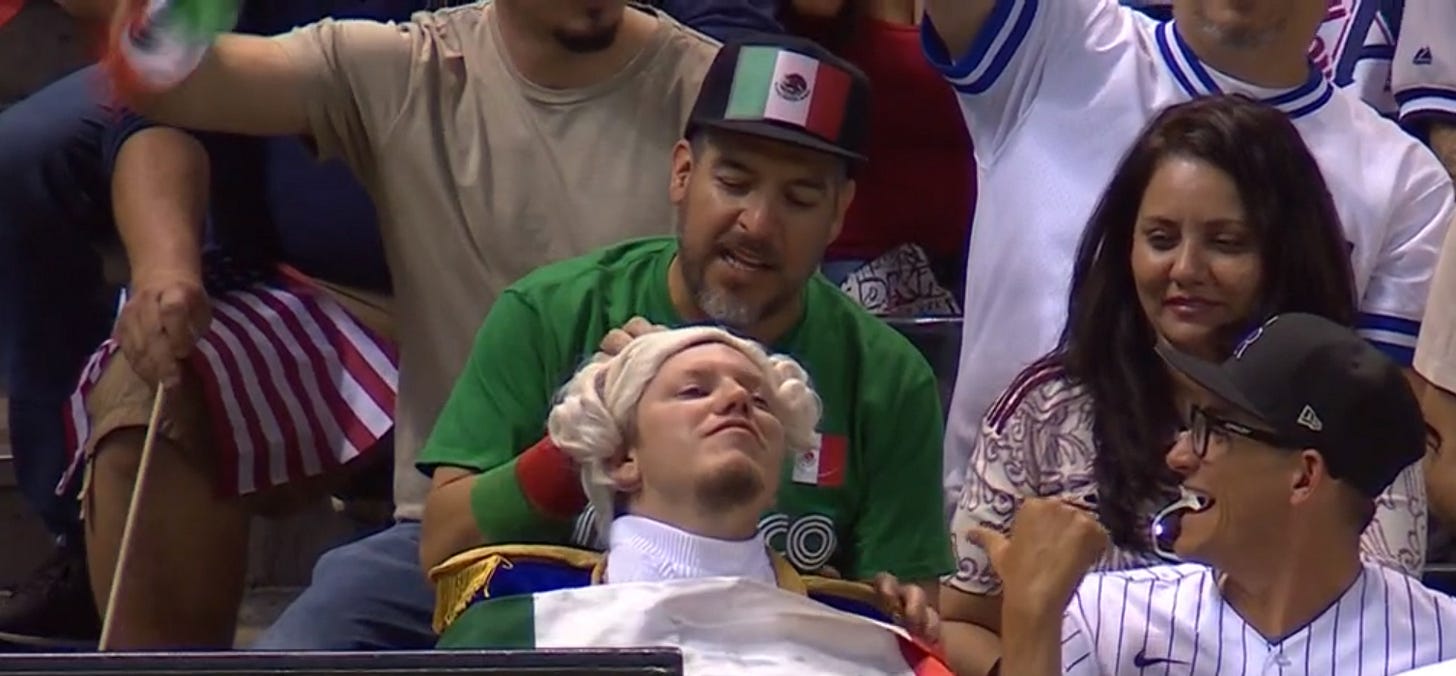
That brings us to the USA’s Pool C. That one started off with an upset in its very first game, as Colombia beat Mexico, 5–4, in 10 innings on Saturday, with Padres righty Nibal Crismatt outlasting Mexico’s Julio Urías thanks to some great plays by the Colombian defense, Colombian first baseman Reynaldo Rodriguez (a 36-year-old former Red Sox and Twins farmhand) going 3-for-4 with a two-run homer and a third RBI, and the winning run scoring on a fielding error by the Brewers’ Luis Urías. Mexico then turned right around and stomped the USA, 11–5, on Sunday in a game that wasn’t even that close, lighting up Nick Martinez, Brady Singer, and Daniel Bard, with Nationals late-bloomer Joey Meneses going 3-for-5 with two home runs and five RBI for Mexico, and Angels lefty Patrick Sandoval and Cubs righty Javier Assad combining to allow the All-World USA lineup just one run over six innings.
That loss to Mexico had the potential to be disastrous for Team USA, particularly given all of the runs allowed in the game and the resulting likelihood of the U.S., Mexico, and Colombia all finishing 3–1, requiring the runs-allowed quotient (runs allowed divided by defensive outs) to determine which of the three would advance to the quarterfinals.
Then, out of nowhere, Great Britain—which lost to the U.S. on Saturday in its first WBC game and was mercied by Canada by a score of 18–8 in the battle to avoid relegation on Sunday—stepped up and beat Colombia, 7–5, Monday afternoon. Great Britain is still likely to be relegated (assuming Britain and Canada both finish 1–3, Canada’s head-to-head win over Great Britain will break the tie), but they just did the U.S. a huge favor.
To recap the action so far: Mexico beat USA, which beat Great Britain, which beat Colombia, which beat Mexico. It’s unlikely that this will be Pool A all over again, but this is still pretty chaotic.
So what now? To assume that there won’t be any more upsets in Pool C seems foolish at this point, but let’s do it, anyway. If we assume that Canada and Great Britain will lose the rest of their games and both finish 1–3, Team USA (which plays Canada Monday night at 10pm ET), Colombia (which plays Canada on Tuesday at 3pm ET), and Mexico (plays Canada Wednesday at 3pm ET), will all enter Wednesday at 2–1, and Mexico will go to 3–1 and advance with a win over Canada that afternoon. The final game in the pool will see the U.S. and Colombia face off at 10pm Wednesday night in what amounts to another play-in game, the winner advancing, the loser getting eliminated. The seeding of the two 3–1 teams will then be determined by the result of their head-to-head game.
What to Watch
Here are the most important games remaining in pool play:
Mon, March 13: Canada @ USA, 10pm ET, FS1
Tues, March 14: Canada @ Colombia, 3pm ET, FS2
Wed, March 15: Mexico @ Canada, 3pm ET, FS2
Wed, March 15: Puerto Rico @ Dominican Republic, 7pm ET, FS1
Wed, March 15: USA @ Colombia, 10pm ET, FS1
Prior to the three Wednesday games above, in the commuting hours on the East Coast in the U.S., the first quarterfinal will take place in Tokyo:
Wed, March 15: Quarterfinal: Australia @ Cuba, 6am ET, FS2
After Wednesday’s action-packed schedule, the tournament will end with six elimination games in six days. All but the March 16 game will take place in loanDepot Park in Miami:
Thu, March 16: Quarterfinal: Italy @ Japan, Tokyo Dome, 6am ET, FS2
Fri, March 17: Quarterfinal: Pool C runner-up @ Pool D winner (likely Venezuela), 7pm ET, FS1
Sat, March 18: Quarterfinal: Pool D runner-up (likely P.R. or D.R.) @ Pool C winner, 7pm ET, FOX
Sun, March 19: Semifinal: March 15 winner v. March 17 winner, 7pm ET, FS1
Mon, March 20: Semifinal: March 16 winner v. March 18 winner, 7pm ET, FS1
Tue, March 21: Final: March 19 winner v. March 20 winner, 7pm ET, FS1
I plan to watch as many of those dozen games as possible over the next week. I hope you’ll join me.
Now, here they are, your closing credits:



